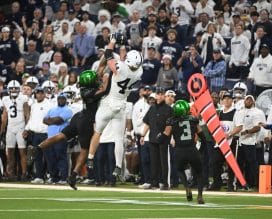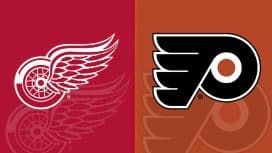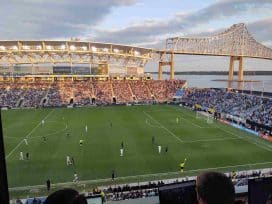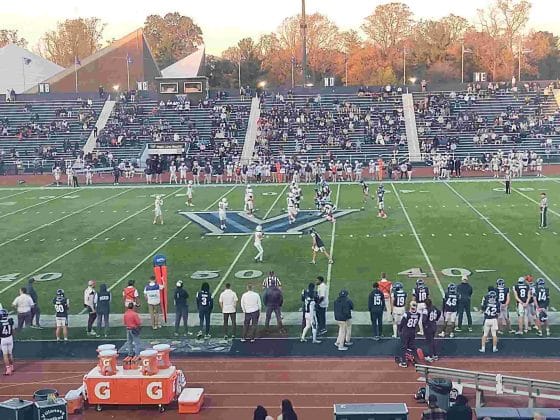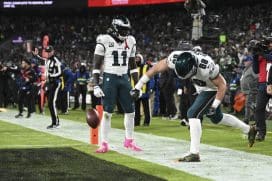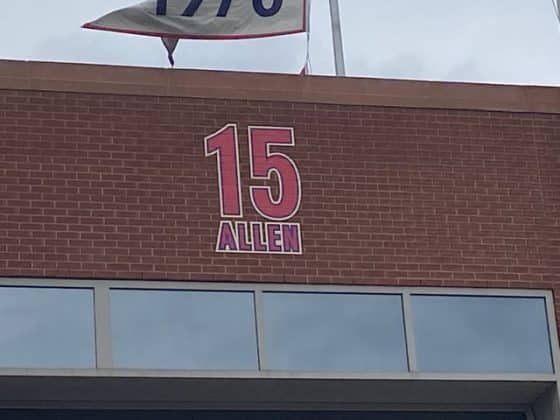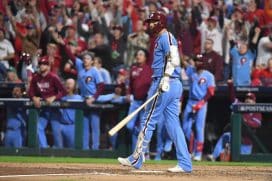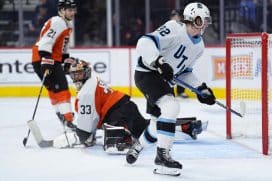Photographer: Kate Frese
Is Laughton Skating on Thin Ice?
For most young players in the National Hockey League, earning a roster spot and a place in the starting lineup is only half the battle. The other half is keeping that spot. Ice time can be hard to come by, and the pressure is high to impress in limited opportunities.
Flyers center Scott Laughton knows this plight all too way. The Flyers' first round pick in the 2012 NHL Draft spent 31 games at the NHL level as a rookie last season but was returned to the AHL's Lehigh Valley Phantoms after seeming to "hit the wall" in the games he played after his return from a concussion.
A somewhat similar situation might be happening this season. After a strong training camp and preseason enabled a noticeably more confident and aggressive Laughton to earn a spot in the Flyers starting lineup, his ice time has been reduced steadily as his effectiveness waned in recent weeks. Although Laughton has dressed in all 31 games the team has played to date, his hold on a lineup spot does not appear to be secure.
Based on ice time distribution, the line that Laughton centers — presently featuring R.J. Umberger and Matt Read as his wingers — is the Flyers fourth line, with the Pierre-Edouard Bellemare unit performing the defensive responsibilities traditionally associated with a team's third line. While many NHL teams nowadays feature three lines that carry expectations and all four lines are rolled regularly at even strength, the Laughton line has been used sparingly in recent weeks.
Laughton's ice times have dipped below double-digits in 12 of the last 14 games — including a game in Ottawa game in which Laughton was knocked out early in the first period. In October, Laughton averaged 12:54 of ice time per game. In November, it dropped to a 10:22 average. Thus far in December, his average is 8:21. After skating 20-plus shifts in eight of the season's first 13 games — including six games in a row at one point — Laughton has only reached the 20-shift usage mark once in the last 18 games.
Flyers head coach Dave Hakstol downplayed the significance of the ice time distribution as a question of not trusting the Laughton line as much as he does other units. After the Flyers' 4-3 overtime win over the Carolina Hurricanes on Tuesday, Hakstol said that he actually tried to use the revised trio with Read skating with Laughton and Umberger in vital game situations.
"That line didn’t get a ton of minutes but the minutes that they got were critical," Hakstol told reporters covering Wednesday's practice at the Skate Zone in Voorhees, NJ. "They will probably see a little bit more in terms of five-on-five play as we move forward but that will be dictated by the game."
It is hardly uncommon for coaches to talk up the contributions of lesser-used players while dangling the carrot of potentially increased ice time. Partially due to serving a pair of minor penalties, Laughton skated just 6:35 of ice time and 12 shifts in Tuesday's game. Excluding the Nov. 21 game in Ottawa in which Laughton had to leave the game due to an injury on his first shift, Tuesday's game was his second-lowest ice time of the season. The young player's usage pattern suggests that this was not a one-game abberation or simply a matter of penalty time having a major impact on his total ice time.
Given the fact that, for salary cap reasons, the Flyers could face an either/or choice of keeping Shayne Gostisbehere or Laughton at the NHL level when Mark Streit is ready to be activated from the long-term injured reserve list, the roster spot that Laughton won out of training camp appears to be in significant short-term jeopardy unless the Flyers make a trade or waiver move, or a separate long-term injury arises, to free up cap space after Streit is eventually cleared to return.
Laughton is the only waiver-exempt player on the Flyers' roster apart from Gostisbehere. This is a major factor looming on the horizon, because there is virtually no chance that Gostisbehere gets sent back to the AHL given the impact he's had on the Flyers' lineup. While the Flyers may opt to waive a veteran who does not have a no-movement clause in his contract in order to get up to $950,000 of cap relief and fit Gostisbehere on the roster, the most expedient move might be to simply assign Laughton back to the Phantoms for the time being.
Additionally, as soon as forward Sam Gagner (concussion) is activated from the injured reserve list, Hakstol will have a decision to make about where to fit him in the lineup. It is possible that Laughton could be displaced.
The Flyers have already done some experimenting with moving Laughton to a different spot in the lineup. In late November, Laughton was briefly moved from center to wing during Nick Cousins' recall to the big club. Along with the rest of the team, their line had a strong performance as the team's Nov. 28 matinee 3-0 victory over the New York Rangers progressed. There were also some encouraging signs in Laughton's play in last Tuesday's shootout loss to the New York Islanders. Many of the other games in that span have been ineffectual.
Laughton has shown flashes of NHL-level potential, showing off a dangerous shot from the circle and above-average speed. He's had three-game and two-game point streaks, which isn't too bad for a 21-year-old second-year pro still feeling his way in the NHL and playing limited minutes.
However, Laughton has also had his share of struggles on both sides of the puck.
For a player who was widely touted as a future shutdown-caliber center in the NHL, Laughton has gotten an eye-opening experience that making correct defensive reads and plays against NHL-callber opponents and systems involves a much steeper learning curve than playing without the puck in junior hockey or even the AHL. Likewise, there's much less time on the attacking with the puck on your stick to make plays. Laughton, who is 87 for 202 (43.1 percent) on faceoffs, has also found that he's got much to learn about winning draws at the top level if he is to remain as a center.
If Laughton were to be sent back to the Phantoms for a second straight season, it would be a good test for the 21-year-old to overcome the sting of a demotion, rebuild his confidence while working his way back to the level that won him an NHL job and regular early season use and then to progress from there. A return to the AHL needn't damage his long-term outlook.
Bill Meltzer is a columnist for Flyerdelphia. Follow him on Twitter @billmeltzer.




